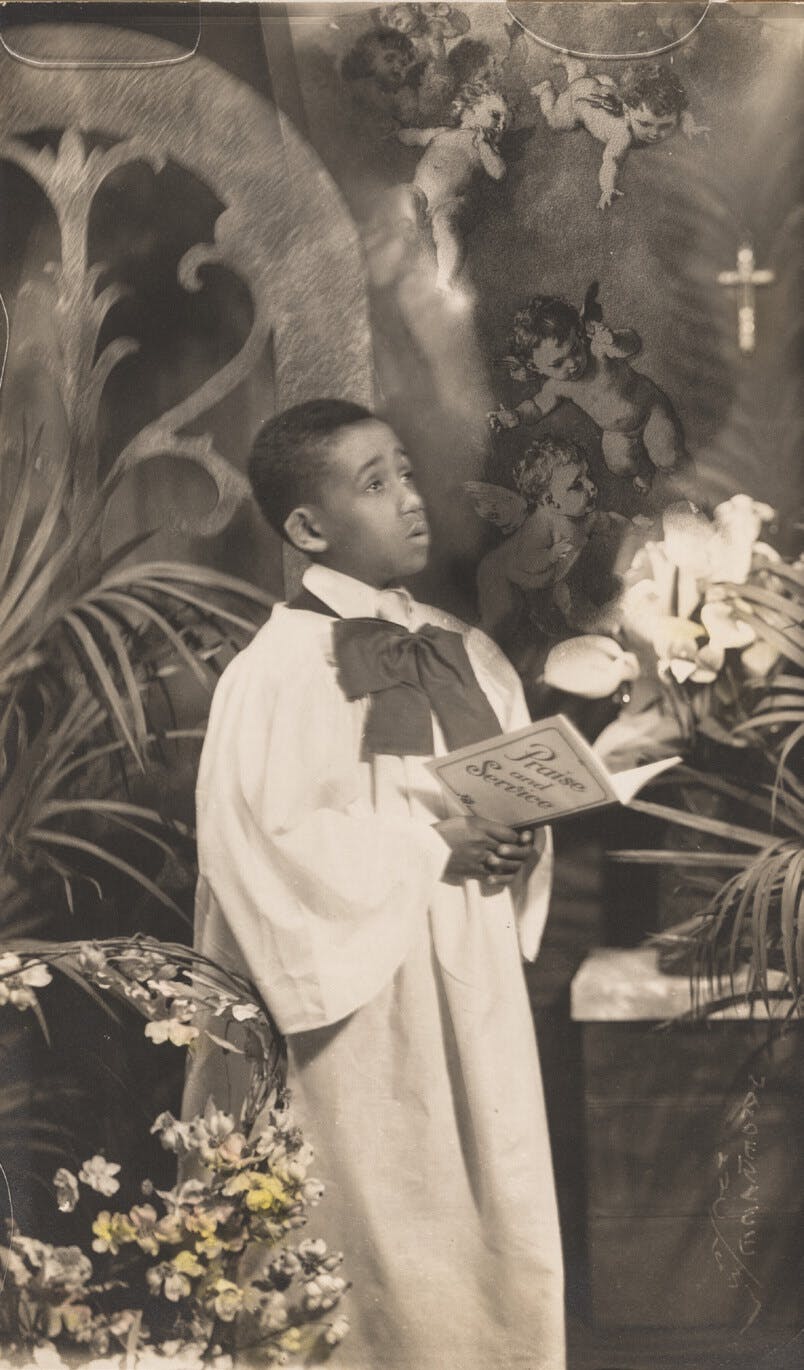On View in Edges of Ailey at the Whitney Museum: Maren Hassinger, River; James Van Der Zee, Choir Boy

James Van Der Zee, Choir Boy, 1937. Gelatin silver print, Image: 8 × 5 in. Studio Museum in Harlem; Gift of the Sandor Family Collection 2000.11.13

James Van Der Zee, Choir Boy, 1937. Gelatin silver print, Image: 8 × 5 in. Studio Museum in Harlem; Gift of the Sandor Family Collection 2000.11.13
Billed as the “first large-scale museum exhibition to reflect on the life, work, and legacy of visionary choreographer, dancer, and activist Alvin Ailey,” Edges of Ailey at the Whitney Museum of American Art surveys Ailey’s life and the influences that inspired his work, as well as the impact he made on Black American culture.
In the late 1950s, Ailey founded Alvin Ailey American Dance Theater, after dancing and then leading as director and choreographer at Lester Horton Dance Theater. Ailey’s dance company focused on and amplified African American heritage and culture and hired multiracial dancers at a time when other principal dance theaters would not. His contribution to the art of modern dance helped others understand and embrace both Black life and dance.
Working closely with the Alvin Ailey Dance Foundation, the Whitney brings together an array of archival material and artwork in all media by more than eighty artists. In this way, the exhibition curator, Adrienne Edwards, Engell Speyer Family Senior Curator and Associate Director of Curatorial Programs, presents Ailey through a broad lens that expands beyond the parameters of his influence on American dance into the realms of visual art, literature, and performance. The exhibition unfolds in nine distinct sections—Southern imaginary, Black spirituality, Black migration, Black liberation, Black women, Ailey’s collaborators, Black music, Ailey’s influences, and after Ailey—how dance changed after Ailey. During the run of the exhibition, the Whitney has planned a robust and dynamic performance program.
Two works from the Studio Museum’s collection are included in the exhibition: Choir Boy (1937), by photographer James Van Der Zee, and River (1972/2011), by multidisciplinary artist Maren Hassinger. In Choir Boy, a young boy in a choir robe holds a booklet that reads “Praise and Service,” likely a book of hymns. Van Der Zee’s career focus, like Ailey’s, was to highlight and showcase the pride and everyday lives of Black Americans. Here, Van Der Zee photographs the young boy as he sings and gazes heavenward. Similarly, with his dance performance Revelations, Ailey emphasizes praise and worship as an integral part of the Black church. He mirrors this spiritual connection through his selection of spirituals and gospel songs, choreography, and costumes with flowing gowns and pants similar to praise dancewear.
Made of heavy steel chains that are interwoven with several thick ropes of varying length, Hassinger’s River imitates what its title suggests, and conveys the effect a river has on the land and its people—the ropes are suggestive of the land and the chains mimic unyielding water streams that flow through it. River also carries the weight of the Middle Passage, referencing the chains shackling enslaved Africans on the ships to the Americas. Ailey’s The River, performed to a music score by jazz musician Duke Ellington, also uses the symbol of water to trace and echo one’s life journey. A recurring motif in The River, water provides a metaphorical backdrop for each of the distinct acts—Lake, Falls, Giggling Rapids, and Vortex. Each of the dancers’ movements in The River is suggestive of flowing bodies of water, and are also allegories of birth, death, and rebirth.
Edges of Ailey explores these works as seen alongside portraits of Ailey, a gay Black man whose remarkable life and career intersected with and were the inspiration for many visual artists, writers, and other dancers.


Maren Hassinger, River, 1972/2011. Mixed-media installation with steel chains and rope, dimensions variable. Studio Museum in Harlem; Gift of the artist 2012.34; courtesy the artist and Susan Inglett Gallery